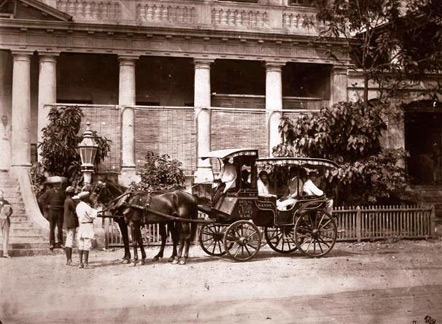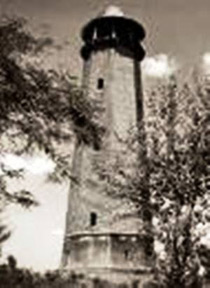The Colombo - Kandy Road, the long and the short of it
 Many things in the present world we take for granted. The Colombo -
Kandy road is one of them. If we ask a fellow traveller, whether he
knows how this road began, he will say, why it got going when everything
got going. Perhaps the answer is not that stupid for there certainly has
to be a conglomerate of many factors for its birth, historical and
otherwise. And many are of the idea that there was no connection between
the highland capital and lowland capital till Barnes came into the
scene, an opinion much falsified. Many things in the present world we take for granted. The Colombo -
Kandy road is one of them. If we ask a fellow traveller, whether he
knows how this road began, he will say, why it got going when everything
got going. Perhaps the answer is not that stupid for there certainly has
to be a conglomerate of many factors for its birth, historical and
otherwise. And many are of the idea that there was no connection between
the highland capital and lowland capital till Barnes came into the
scene, an opinion much falsified.
Barnes (1820 -1830) became governor of Ceylon after Brownrigg during
whose time the Kandyan kingdom was annexed to the maritime provinces of
the British. Rebellions during Brownrigg's time had demonstrated the
need for quick action when militia had to be on the spot fast. The 1818
rebellion had followed close on the heels of the conquest of Kandy in
1815. Roads thus became a necessity.
First roads, second roads, third roads was the pompous declaration.
|

Mail Coach |
Further, Britain had almost culminated the process of its Industrial
Revolution and was in a mood to build roads to traverse its colonial
empire. Metcalfe, Telford and Macadam had contributed much to make
perfect the art of road building, Macadam lending even his name to
Macadamising roads.
Hills and dales
One may run away with the idea that till Governor Barnes began his
spurt of road building there was no road link to Kandy. There certainly
was, a rugged one that crept along river banks and ran along hills and
dales. It was the one taken by both the earlier Western powers in their
invasions of Kandy and even by the English till Barnes's time and one
cannot but help admiring their perseverance.
The idea had got impregnated that the whole world was going to be a
White Man's domain and so nothing seems to block their strategies. How
did the earlier road get going? A surmise could be made that the pontoon
bridge of Thotalanga first provided access to cross the Kelani River,
ballooned to a wide area as it neared the Indian ocean. Then the road
wended its way along the banks of the river passing through Awissawella
(Sitawaka), Hanwella and Ruwanwella. Then along a steep incline the road
climbed up Iddamalpana, Hettimulla and Attapitiya. It corresponded with
the new road to be constructed at Ganetenna and Amunupura topping the
Balana Pass. Now one was almost at the gateway of the Kandyan kingdom.
Circuitous road
That was a very circuitous road and there is a contention that the
rulers of the highlands deliberately kept it so to facilitate the
guerilla warfare methods developed to made Kandy a closeted city. Barnes
empowered the Commissioner of Highways, Major Skinner to construct a
more direct route for now, lord and master, no circuitous roads need to
be maintained. In 1821 work was begun on the new road.
It forged ahead straight through Mahara (very close to Colombo) and
Kadawatha and went on to Yakkala and Warakapola. Then on to Kegalle,
Mawanella and Peradeniya. These places now shot into fame with the new
road passing through while the premier places on the old route went into
limbo. The Sandeshas carry the old names for the aerial travellers
always flew along the old routes.
The Kadugannawa gap provided a challenge that was surmounted by
Captain Dawson. The Dawson Tower looms high today as a homage to him.
|

Dawson Tower |
The builders had to span four rivers too, the Kelani River at
Grandpass, Ma Oya at Mawanella, the Nanu Oya (in Kandyan terrain) and
the Mahaweli at Peradaeniya.
Ferry service
The ferry service bridge continued to span the Kelani while all
others were wooden bridges. The British had qualified themselves to be
the ultimate conquerors of this impregnable fortress by fulfilling
certain requirements. Among them were that the Mahaweli had to be forded
and a hole had to be borne through the mighty Kadugannawa rock. These
opened out the highland kingdom to an alien race.
Roads, however, were built to be used and not to be only showcased as
feats.
The road can boast of a first in Asia as it was the first road in
Asia to run a horse carriage and mail coach service. That was in 1832.
The post was delivered up to now by pigeons or by runners, mostly
Negroes famed for speedy running. Now a regular postal system began.
Encouraged by the success of all these ventures, Barnes launched an
ambitious plan to connect all the coastal towns, which entailed 736
miles.
Who gained mostly from this spurt of roads, especially by the Kandy -
Colombo Road? The immediate beneficiaries were the upcountry planters,
mostly Europeans. Their estate produce of coffee and tea were hitherto
transported by slow bullock carts, which too ran along rugged roads
taking months. Now sleek tarred roads much quickened the process and
even enabled lorry transport. It is surmised that Barnes was provoked to
build the Kandy - Colombo Road so quickly by the eagerness of the
Kandyan planters.
But the need to unify the country via roads too remained intact. |

